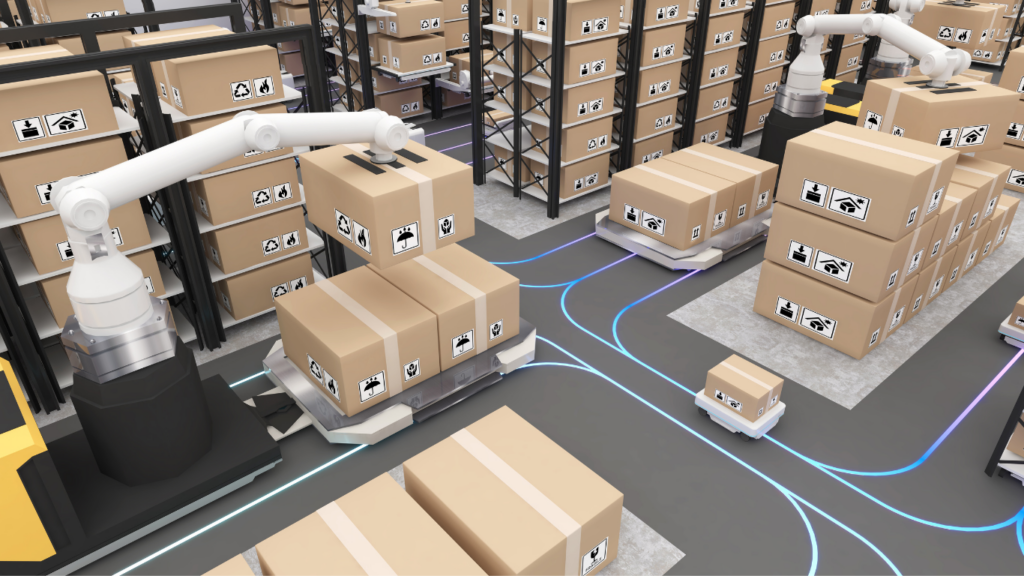Comprehensive Inventory Management Solution
Our goal is to boost your business revenue and efficiencies while mitigating risk and lowering your operational costs.
The Ultimate Solution for Seamless Operations Across All Channels
1. Real-Time Sync with Marketplaces:
Achieve seamless integration with online marketplaces by synchronizing inventory, orders, and stock levels in real time. Enjoy automated features like dynamic repricing and feedback management tailored to each marketplace, ensuring maximum visibility and competitive edge. Manage multi-channel sales effortlessly while preventing overselling, enhancing both efficiency and profitability.
2. Real-Time Sync with Marketing Channels:
Optimize your ad spend and maximize ROI with automatic syncing of marketing campaigns across all platforms. Adjust or pause campaigns based on real-time inventory levels to avoid wasted spending on out-of-stock products. Monitor campaign performance and customer behavior across multiple channels, while automated bid adjustments ensure the most effective use of marketing dollars.
3. Real-Time Sync with Brick-and-Mortar Stores:
Integrate your physical stores with online marketplaces, marketing channels, and product data, creating a unified inventory and sales ecosystem. Benefit from improved scalability, data security, and faster time-to-market while reducing the risk of errors, overselling, and stockouts. Strengthen partner relationships and enhance customer service through seamless synchronization with popular POS systems.
4. Real-Time Sync with Social Media Channels:
Leverage the power of social commerce with real-time syncing for product tagging, social media monitoring, and customer engagement. Automatically post updates and promotions based on inventory levels, track engagement, and optimize your social selling strategy, creating a dynamic and interactive shopping experience that drives sales directly from social platforms.
5. Real-Time Sync with Carts:
Enhance the shopping experience by syncing inventory, carts, and stock levels across all customer touchpoints. Reduce cart abandonment with real-time updates and seamless integration with popular e-commerce platforms, ensuring customers always have accurate product availability information, boosting trust and conversion rates.
6. Real-Time Sync with Webstores:
Streamline your e-commerce operations by synchronizing inventory, orders, product information, and stock levels in real time with your webstore. Integration with popular platforms ensures up-to-date sales and inventory reporting, helping you make informed decisions and enhance customer satisfaction.
7. Real-Time Sync with Vendor Software:
Maintain accurate inventory levels by synchronizing directly with vendor software. Automate inventory management processes, reducing manual effort and minimizing errors, while keeping inventory data up-to-date and aligned with supplier stock, enhancing supply chain efficiency.
Real-time synchronization offers a complete, integrated solution that connects every aspect of your business—from marketplaces to marketing channels, brick-and-mortar stores to social media, carts to webstores, and vendor software. you gain a competitive advantage, improved data security, and reduced risks, ensuring your business is always in sync, always efficient, and always ready to meet customer demands.

Transform Your Inventory Management with Advanced Bundling, Kits, and Variation Strategies

1. Track Inventory Across Every Stage of the Supply Chain:
Gain complete visibility of your inventory from procurement and production to final sale. Monitor stock levels and movements in real time, enabling you to optimize processes, minimize waste, and boost overall efficiency and profitability.
2. Centralized Inventory Management System:
Manage all your inventory seamlessly from one platform with a unified view of stock levels across multiple marketplaces like Amazon, eBay, Walmart, and more. Make data-driven decisions on replenishment and reduce the risk of stockouts by having a comprehensive overview of your inventory.
3. Automatic Stock Alerts:
Stay ahead of stockouts with automatic alerts when inventory reaches a critical threshold. Receive real-time notifications to replenish stock promptly, ensuring uninterrupted sales and customer satisfaction.
4. Accurate Forecasting:
Leverage advanced forecasting tools to predict future inventory needs, helping you plan proactively to avoid stockouts or excess inventory. Make informed purchasing decisions based on historical data, seasonal trends, and market dynamics.
5. Automated Replenishment:
Set up automated replenishment triggers to reorder inventory automatically when levels fall below a certain threshold. Maintain optimal inventory levels at all times, reduce manual workload, and eliminate the risk of running out of stock.
6. Generate Customizable Reports:
Access detailed, customizable reports that provide insights into sales trends, product performance, and inventory health. Utilize these insights to refine strategies, improve inventory turnover, and maximize profitability.
7. Barcode Scanning Technology:
Implement barcode scanning to instantly and accurately update inventory levels, reducing errors, and speeding up processes. Seamlessly integrate with other systems to create a streamlined operation that boosts efficiency across the board.
8. User Permissions for Inventory Control:
Secure your inventory management with user permissions, ensuring only authorized personnel can make changes to inventory data, safeguarding against errors, and unauthorized access.
9. Historical Data Tracking:
Historical inventory data to understand past sales trends and predict future demand accurately. Use this data to fine-tune inventory strategies, optimize stock levels, and enhance your market responsiveness.
Efficiently manage your Inventory with optimized handling of kits, bundles, variations, and product attributes.
1. Expand Product Offerings with Smart Bundling:
Create new products by bundling existing items together, allowing your business to diversify its product range without the need to purchase additional inventory. This strategy enables you to tap into new market opportunities and boost revenue while leveraging your current stock.
2. Simplify Inventory Management Through Bundling:
Streamline your inventory processes by managing multiple items as a single bundled unit. This not only reduces the complexity of tracking individual products but also minimizes errors, improves accuracy, and saves time—leading to a more efficient and organized inventory system.
3. Optimize Inventory Utilization with Strategic Bundling:
Enhance inventory efficiency by bundling slow-moving items with fast-selling products. This approach improves inventory turnover, reduces waste, and cuts down holding costs, resulting in lower overheads and a stronger bottom line.
4. Accelerate Order Fulfillment with Pre-Stocked Kits:
Pre-create kits from bundled items and keep them ready in your inventory to speed up the order fulfillment process. By having these kits available, businesses can fulfill orders more quickly and accurately, elevating the customer experience and minimizing the risk of shipping errors.
5. Track Inventory Levels Efficiently by Attributes:
Maintain precise control over inventory levels by tracking each product attribute, such as size, color, or style, separately. This ensures optimized inventory management, prevents overselling, and allows for better stock replenishment planning, keeping your inventory aligned with customer demand.
6. Simplify Management of Product Variations:
Group similar items with shared product variations, such as different sizes or colors, into a single category for easier management. This allows you to oversee inventory levels of each variation as a whole, rather than tracking each individual item separately, reducing the administrative burden and ensuring accurate stock levels.
By implementing advanced bundling, kits, and variation management strategies, your business can streamline inventory management, enhance operational efficiency, and unlock new revenue streams—all while delivering a superior customer experience.

Maximize Inventory Management Efficiency with Centralized Multi-Warehouse and 3PL Integration

1. Gain Deeper Insights into Customer Behavior:
Leverage accurate, real-time inventory data from a centralized management system to better understand customer preferences and purchasing patterns. This data-driven approach enables smarter decisions about procurement, production, and fulfillment, aligning inventory with actual customer demand.
2. Track Inventory Across Multiple Locations in Real Time:
Monitor inventory levels and movements across multiple warehouses and locations with real-time tracking. This comprehensive visibility helps you make informed decisions about restocking, purchasing, and inventory allocation, reducing the risk of stockouts and excess inventory.
3. Optimize Inventory Storage and Allocation:
Utilize precise tracking of inventory across various locations to optimize storage and reduce stockout risks. Allocate stock strategically to locations where it’s needed most, ensuring that the right products are always on hand to meet customer demand.
4. Streamline Order Fulfillment with Multi-Location Management:
Enhance order fulfillment by managing inventory across multiple locations, allowing you to ship products from the nearest warehouse or 3PL to the customer. This reduces shipping times, improves delivery accuracy, and elevates the overall customer experience.
5. Reduce Shipping Costs with Strategic Inventory Placement:
Lower shipping costs and transit times by strategically placing inventory across multiple warehouses or third-party logistics (3PL) providers. This optimized approach reduces delivery distances and costs, benefiting both the business and the customer.
6. Enhance Visibility and Control Across the Entire Supply Chain:
Manage all warehouses and 3PLs from a single, centralized platform, providing greater visibility and control over the entire supply chain. Monitor inventory levels, track order statuses, and manage transportation and logistics operations efficiently, ensuring smooth, end-to-end supply chain management.
By centralizing inventory management across multiple warehouses and integrating with 3PLs, businesses can optimize storage, reduce costs, enhance customer satisfaction, and maintain a high level of control and visibility throughout the supply chain.**
Transform Your Inventory Management with Automated Vendor Feeds and Real-Time Updates
1. Automate Inventory Updates with Vendor Feeds:
Streamline your inventory management by setting up automated vendor feeds to instantly update inventory levels. When vendors modify their product information, NetSuite’s inventory management software automatically reflects these changes in your system, ensuring up-to-date inventory data without manual intervention.
2. Enhance Accuracy with Real-Time Inventory and Pricing Feeds:
Reduce human error and maintain precise inventory levels with automated inventory and pricing feeds. Real-time updates minimize the risk of stockouts or overstocking, enabling your business to set optimal prices, increase sales, and boost profits by always having the right products available at the right time.
3. Boost Efficiency and Productivity:
Cut down on manual effort by automating inventory and pricing updates through data feeds. This automation not only reduces errors but also significantly improves operational efficiency, freeing up valuable time for staff to focus on strategic tasks and driving overall productivity and profitability.
4. Ensure Accurate Inventory Levels and Avoid Stock Discrepancies:
Maintain consistent and accurate inventory levels through automated updates, preventing costly stockouts and overselling. This level of accuracy enhances customer satisfaction and trust by ensuring products are always available when needed.
5. Foster Stronger Collaboration with Vendors:
Improve collaboration by seamlessly sharing data with vendors through automated feeds. This transparency fosters better communication, leading to stronger business relationships, more favorable terms, and a more responsive supply chain.
By automating inventory updates and leveraging real-time data feeds, businesses can achieve greater accuracy, efficiency, and collaboration, ultimately enhancing their competitive edge and driving long-term growth.

